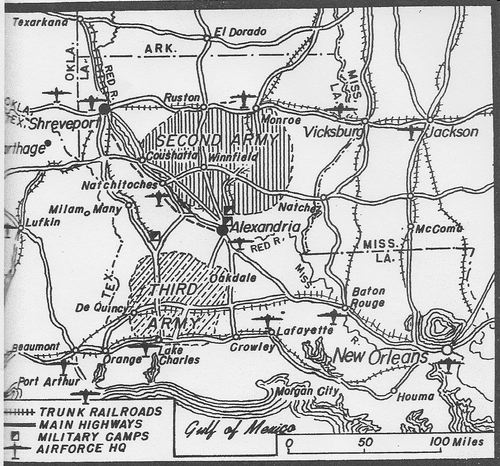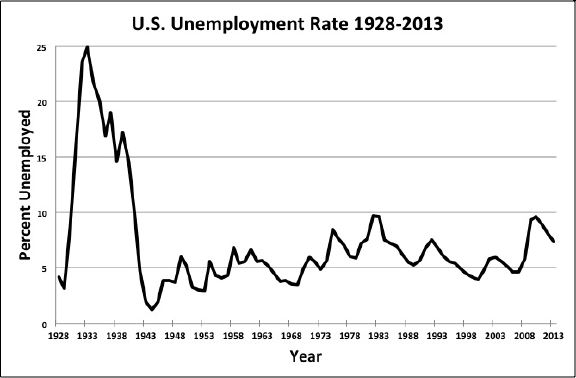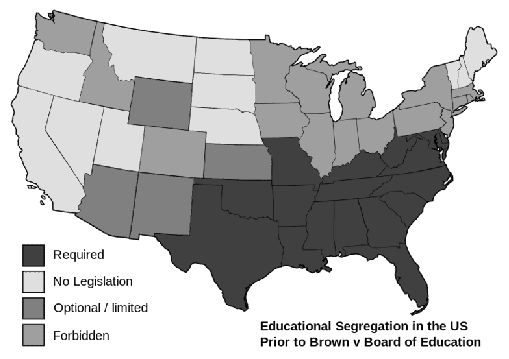Multiple Choice
Identify the
choice that best completes the statement or answers the question.
|
|
|
1.
|
How are jobs awarded under a civil service
system?
a. | based on friendship | b. | based on party loyalty | c. | based on a lottery
system | d. | based on skills and
experience |
|
|
|
2.
|
Which explains how Louisianans contributed to the
D-Day invasion?
a. | The second in command was a native
Louisianan. | b. | Boats used in the
invasion were made in the state. | c. | The mastermind
behind the plan was from Louisiana. | d. | Soldiers from the
state were the first to land on the beach. |
|
|
|
3.
|
Which of the following was the purpose of the
Voting Rights Act of 1965?
a. | It established a registration
system. | b. | It lowered the voting age to
eighteen. | c. | It outlawed literacy tests and poll
taxes. | d. | It gave Native Americans the right to
vote. |
|
|
|
4.
|
Who was a prominent leader of the NAACP in Louisiana?
a. | A.P. Tureaud | b. | Booker T. Washington | c. | Martin Luther King,
Jr. | d. | W.E.B. DuBois |
|
|
|
|
|
|
5.
|
The plans shown are for which type of
boat?
a. | Eureka | b. | Landing Craft | c. | Mackinaw
Tank | d. | torpedo |
|
|
|
6.
|
Which two innovations made this boat ideal for
military work?
a. | enclosed propeller and hatch | b. | rear located gas tank and engine | c. | specialized landing bow and drop-down gate | d. | steering wheel location and gunner’s
cockpit |
|
|
|
7.
|
Use the excerpts to answer the question.  ***********  ***********  Based on the texts,
which conclusion can be drawn about Andrew Higgins’ impact on Louisiana’s
economy? Based on the texts,
which conclusion can be drawn about Andrew Higgins’ impact on Louisiana’s
economy?a. | Higgins’ only economic impact was during World War
II. | b. | Higgins’ economic contributions to Louisiana were
limited by World War II. | c. | Higgins’ was
able to benefit the state’s economy through a specialized business
model. | d. | Higgins’ businesses contributed millions of
dollars and thousands of jobs to the state for many years. |
|
|
|
Use the event list to answer the question. 
|
|
|
8.
|
Which governors served Louisiana during the United
States’ involvement in World War II?
a. | Earl Long and Robert Kennon | b. | Jimmie Davis and Earl Long | c. | Sam Jones and Earl Long | d. | Sam Jones and
Jimmie Davis |
|
|
|
9.
|
Which Long era programs did Sam Jones promise to
continue?
a. | patronage and the deduct box | b. | Share Our Wealth and patronage | c. | deduct box and free schoolbooks | d. | free schoolbooks and infrastructure |
|
|
|
10.
|
How would the establishment of the civil service
system affect party supporters?
a. | There would be fewer government jobs
available. | b. | They would be
required to work for the governor. | c. | There would be
requirements, including community service. | d. | They would have to
make larger campaign contributions. |
|
|
|
11.
|
Which of Louisiana’s governors is credited
with bringing dignity and stability back to the office?
a. | Earl Long | c. | Robert
Kennon | b. | Jimmie Davis | d. | Sam
Jones |
|
|
|
12.
|
What is sales tax?
a. | A tax paid by the seller on goods sold to the
consumer. | b. | A tax paid by the consumer on goods that have been
discounted. | c. | A tax on the
purchase of goods and services collected by the seller. | d. | A tax paid by the seller when he/she discounts goods being
purchased. |
|
|
|
13.
|
Which explains why Earl Long put African Americans
back on voting rolls?
a. | Civil rights groups had financed his
campaign. | b. | Long believed it would create a similar effect to
patronage. | c. | The Supreme Court
ordered that all African Americans be returned to voting rolls. | d. | A.P. Turead threatened Long with legal action if he did not return them to the
rolls. |
|
|
|
14.
|
How did the reality of McKeithen’s term as
governor differ from what he had promised to do?
a. | He increased government
spending. | b. | He upheld the state’s long standing policy of
segregation. | c. | He helped the
state transition peacefully to racial integration. | d. | He discontinued many of the social benefits introduced by
Longism. |
|
|
|
15.
|
Which two events had the most profound impact on
McKeithen’s role as governor of Louisiana?
a. | World War II and Korean War | b. | Civil Rights Act and Voting Rights Act | c. | John Kennedy and Martin Luther King Jr.
assassinations | d. | Brown v. Board
of Education and Baton Rouge bus boycott |
|
|
|
16.
|
How did the United States’ decision to join
the Allied Powers in World War II impact Louisiana?
a. | Louisiana farms and crops were destroyed by tank
training maneuvers. | b. | Louisiana suffered
an economic downturn due to the loss of male workers. | c. | Louisiana became an essential location for training and equipment
production. | d. | Louisiana remained
largely unaffected by the country’s decision to enter the
war. |
|
|
|
17.
|
Which describes the foreign policy known as
isolationism?
a. | excluding nations from alliances and
treaties | b. | keeping the affairs of other nations at a
distance | c. | eliminating all political and economic ties to other
nations | d. | keeping economic and political dealings separate from
one another |
|
|
|
18.
|
How did Louisiana’s economy change after the
United States abandoned isolationism?
a. | Unemployment increased in
Louisiana. | b. | Money and jobs
began flowing into the state. | c. | Louisiana plunged
further into an economic depression. | d. | The economy was
unchanged by this change in foreign policy. |
|
|
|
19.
|
 What is shown in the
map? What is shown in the
map?a. | Louisiana Maneuvers | b. | Union occupied Louisiana | c. | areas affected by
air raids | d. | Higgins Industries
factories |
|
|
|
|
|
|
20.
|
What is meant by the caption “Every Garden a
Munition Plant”?
a. | Gardening was the key to the U.S. military
strategy. | b. | Raising your own food frees up resources for the war
effort. | c. | Organic materials were being used to produce war
weapons. | d. | Gardeners should sell their crops and donate the profits
to munitions plants. |
|
|
|
21.
|
 Which conclusion can be
drawn about the economic impact of World War II? Which conclusion can be
drawn about the economic impact of World War II?a. | The economy was in better shape before the war
began. | b. | War industries do not generally impact a nation’s
economy. | c. | The economy was devastated by the cost of fighting the
war. | d. | War industries provided much needed economic relief
following the Great Depression. |
|
|
|
22.
|
How did World War II help to diversify
Louisiana’s economy?
a. | It expanded the state’s industrial
base. | b. | It expanded the state’s agricultural
base. | c. | It resulted in new international trade
partners. | d. | It reinforced the importance of the petroleum
industry. |
|
|
|
23.
|
What was the GI Bill?
a. | placed returning soldiers in new
jobs | b. | provided free medical care for
soldiers | c. | exempted active duty soldiers from paying
taxes | d. | made an educational scholarship available to
soldiers |
|
|
|
24.
|
Who filed the lawsuit that successfully ended the
system of Jim Crow segregation in New Orleans?
a. | A.P. Tureaud | c. | Martin
Luther King Jr. | b. | Homer
Plessy | d. | Rosa Parks |
|
|
|
25.
|
Which statement describes a
boycott?
a. | speaking out publicly against
something | b. | refusal to ride on segregated forms of
transportation | c. | using organized
groups to negotiate for specific demands | d. | refusal to buy
goods or use services until specific conditions are met |
|
|
|
26.
|
What happened as a result of the Baton Rouge bus
boycott?
a. | Bus companies in the city went
bankrupt. | b. | City legislators took steps to strengthen Jim Crow
laws. | c. | African Americans were given more access to seats on
buses. | d. | African Americans were no longer allowed to use the
city’s buses. |
|
|
|
27.
|
 Which conclusion can be
drawn from the map? Which conclusion can be
drawn from the map?a. | The plaintiff, Oliver Brown, was most likely a
northerner. | b. | Racial segregation
was most common in former slave states. | c. | The Brown v.
Board of Education ruling would only apply to southern states. | d. | States without segregation legislation did not have any African American
citizens. |
|
|
|
28.
|
Which case resulted in school
desegregation?
a. | Brown v. Board of
Education | b. | Dred Scott v.
Sanford | c. | Plessy v.
Ferguson | d. | Swann v.
Charlotte-Mecklenburg Board of Education |
|
|
|
29.
|
Which legislation outlawed discrimination in
employment?
a. | Civil Rights Act | b. | Executive Order 9948 | c. | Plessy v.
Ferguson | d. | Voting Rights
Act |
|
|
|
30.
|
Which legislation outlawed poll
taxes?
a. | Brown v. Board of
Education | b. | Civil Rights
Act | c. | Executive Order 9948 | d. | Voting Rights Act |
|